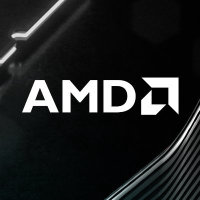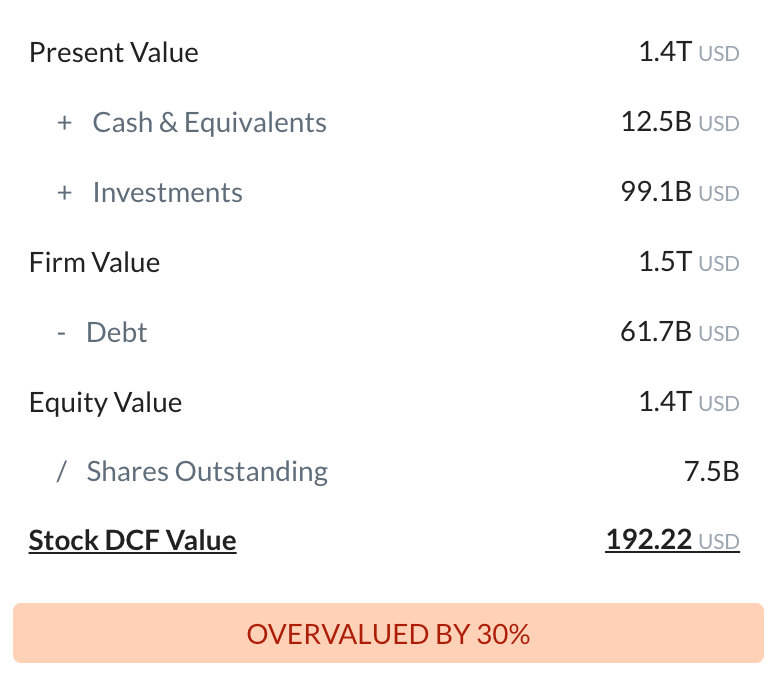
Advanced Micro Devices Inc
NASDAQ:AMD

Intrinsic Value
The intrinsic value of one
 AMD
stock under the Base Case scenario is
hidden
USD.
Compared to the current market price of 87.5 USD,
Advanced Micro Devices Inc
is
hidden
.
AMD
stock under the Base Case scenario is
hidden
USD.
Compared to the current market price of 87.5 USD,
Advanced Micro Devices Inc
is
hidden
.
The Intrinsic Value is calculated as the average of DCF and Relative values:
Valuation History
Advanced Micro Devices Inc

Fundamental Analysis

Growing competition in both processors and GPUs could pressure margins and market share, as Intel introduces more advanced CPUs and Nvidia solidifies its AI and data center GPU leadership.
Increasing traction in data center CPUs positions AMD to capture more enterprise and cloud market share, benefiting from Intel’s process delays and customers’ appetite for diverse solutions.

Revenue & Expenses Breakdown
Advanced Micro Devices Inc

Balance Sheet Decomposition
Advanced Micro Devices Inc

| Current Assets | 19B |
| Cash & Short-Term Investments | 5.1B |
| Receivables | 6.3B |
| Other Current Assets | 7.6B |
| Non-Current Assets | 50.2B |
| Long-Term Investments | 149m |
| PP&E | 2.4B |
| Intangibles | 43.8B |
| Other Non-Current Assets | 3.8B |
Free Cash Flow Analysis
Advanced Micro Devices Inc

| USD | |
| Free Cash Flow | USD |
Earnings Waterfall
Advanced Micro Devices Inc

|
Revenue
|
25.8B
USD
|
|
Cost of Revenue
|
-13.1B
USD
|
|
Gross Profit
|
12.7B
USD
|
|
Operating Expenses
|
-10.7B
USD
|
|
Operating Income
|
2B
USD
|
|
Other Expenses
|
-397m
USD
|
|
Net Income
|
1.6B
USD
|
AMD Profitability Score
Profitability Due Diligence

Advanced Micro Devices Inc's profitability score is hidden . The higher the profitability score, the more profitable the company is.

Score
Advanced Micro Devices Inc's profitability score is hidden . The higher the profitability score, the more profitable the company is.
AMD Solvency Score
Solvency Due Diligence

Advanced Micro Devices Inc's solvency score is hidden . The higher the solvency score, the more solvent the company is.

Score
Advanced Micro Devices Inc's solvency score is hidden . The higher the solvency score, the more solvent the company is.
Wall St
Price Targets
AMD Price Targets Summary
Advanced Micro Devices Inc

According to Wall Street analysts, the average 1-year price target for
 AMD
is 148.42 USD
with a low forecast of 90.9 USD and a high forecast of 236.25 USD.
AMD
is 148.42 USD
with a low forecast of 90.9 USD and a high forecast of 236.25 USD.
Dividends
Current shareholder yield for  AMD is
hidden
.
AMD is
hidden
.
Shareholder yield represents the total return a company provides to its shareholders, calculated as the sum of dividend yield, buyback yield, and debt paydown yield. What is shareholder yield?
The intrinsic value of one
 AMD
stock under the Base Case scenario is
hidden
USD.
AMD
stock under the Base Case scenario is
hidden
USD.
Compared to the current market price of 87.5 USD,
 Advanced Micro Devices Inc
is
hidden
.
Advanced Micro Devices Inc
is
hidden
.



























































 You don't have any saved screeners yet
You don't have any saved screeners yet